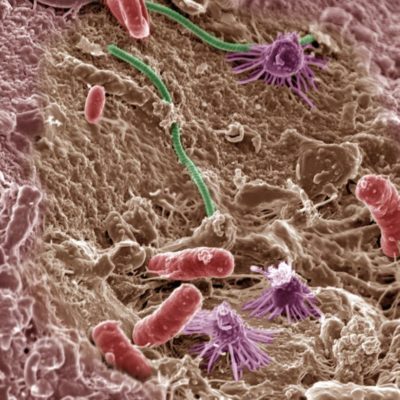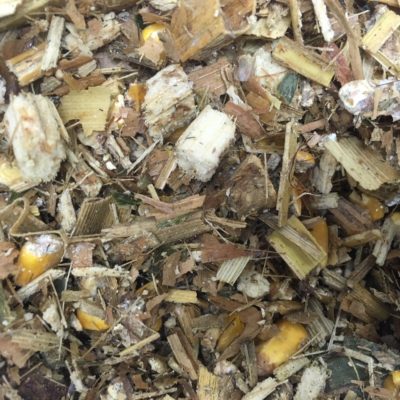What is “regen ag?”
If the topic of “fungal to bacterial ratios” peaks your interest, it is likely you are interested in regenerative agriculture. We are entering the age of regenerative agriculture (commonly referred to as “regen ag”). This is a time where novel concepts and rationales are being introduced to farmers. Many producers are familiar with the “5 principles” of regen ag and soil health: soil armor, minimal soil disturbance, plant diversity, continual living root, and livestock integration.
Furthermore, if you attend a soil health conference or event, presenters are consistently driving home the message that agriculture must change. More crucially, these changes must take place quickly to slow the climate change crisis. Generally, each innovator in regen ag has their own preferred principle of soil regeneration to discuss and share stories about.
Microbes as Grazing Organisms
In February, in Texas, many experts in the ever-expanding regen ag arena spoke to the attendees of Regenerative Grazing for Restoration Conference. The conference was at the Tenroc Ranch in Salado, TX and hosted by Soil Regen, LLC, the brainchild of soil health guru Dr. Liz Haney. Many of attendees and presenters at this conference directly work with livestock. Dr. David Johnson broke this trend, speaking about the grazing organisms he studies; 50 billion microbes per in2 to be specific. In Dr. Johnson’s session, he discussed ways to create more biodiversity in our soils.
Currently, agricultural soils are bacterial dominant. Lack of diversity in our soil microbes is largely due to over-utilization of synthetic chemistry and fungicides. So, we have not been working in natures image but in opposition to it. Bacterial dominance in soils is problematic. Because more bacteria are present in soils, fewer fungi contribute to the agricultural system. Most noteworthy, fungi serve important regulatory roles and cannot be ignored. They are major players in the agricultural system.
It’s all about balance
First of all, soil scientists and microbiologists, such as Dr. Johnson, have been discussing the importance of fungal to bacterial ratios for decades. Also, the effects of fungal to bacterial ratios have been long documented. Specifically, how these ratios effect plant biomass through efficiency of carbon flow. Furthermore, efficiency increases with higher fungal populations. Fungal to bacterial ratios are not a “new” concept. Yet many producers are unaware of how important balanced fungal to bacterial ratios are for their soils to meet optimal production conditions.
So, there is need to wake up the life in our agricultural soils to make them productive again. This statement is not to allude that our soils aren’t yielding. Due to ag technology, farmers can use a litany of resources to generate record yields. Consequently, this comes at a price. Because soil health can be linked to generation of a quality product, we must invest in its betterment.
The entire rationale behind regen ag is to not be driven by a mindset of getting the highest yield using all the modern ag tools available. Some of these modern tools include tillage, synthetic chemicals, and cultivating monocultures of GMO crops. As we move away from these tools, we will increase our capacity to work in natures image. Above all, a slow transition away from tools detracting from soil health will be beneficial to our farm operations.
Be the change
An essential mindset shift must occur for a farmer to implement the principles of regen ag on their operation. Soil health testing at Ward Laboratories and delving into fungal to bacterial ratios can be a good start. A further understanding of “why” this is important just as important. Because CO2 persists as a key topic regarding climate change, a resolution must emerge. The most sensible solution to sequestering the excess of this gas in our atmosphere is capturing it in plant life through nature’s process of photosynthesis. Currently, nature’s processes are impeded by mismanagement of acreage. Hence, when we work in nature’s image, by encouraging diversify of life in our soils, it brings vitality to commodity crops.
Microbes are microscopic but powerful
Fungi and bacteria are important in agricultural soils because they work as decomposers. They play an integral role in the nutrient cycling process for plants. Thus, the more microbial biomass, the healthier the soil, and the more available energy for plant growth. At Ward Laboratories, our Soil Health Tests, including the increasingly popular PLFA and Haney Tests, give a reading for these fungal and bacterial populations.
There is a crucial difference between these microbes. Fungi utilize high carbon substrates, like cellulose and lignin. Bacteria choose high nitrogen sources for food, like manure. As a result, fungi excel at taking in and retaining nutrients in the processes of mineralization and immobilization. Therefore, increasing the populations of fungi in agricultural soils is pivotal to the process of optimizing production of healthy crops.
Next steps
Now that the concept of fungal to bacterial ratios is really on your mind, how can you put this knowledge into action? Be on the lookout for future soil health and regenerative agriculture posts. Specifically, these will address methods to increase your fungal to bacterial ratio. These practices will help increase your soil health. When we have healthy soils, we produce healthy crops. With nutrient dense foods, we have a healthy population. And this all starts with organisms not even seen by the naked eye.
If you are wondering “can (or how can) this work on my operation?”
Feel free to reach out to Ward Laboratories, INC. for a complimentary consultation at 308-234-2418.





[…] Haney Soil Health Test. We measure total organic carbon (TOC) and total nitrogen (TN). The microbes live in the water films that adhere to surfaces of soil particles. The TOC in the water is the food (energy) for the microbes. The TN includes nitrate and […]
Practical guidelines to grow fungal to bacterial ratio is key to farming. I appreciate your work in this domain.